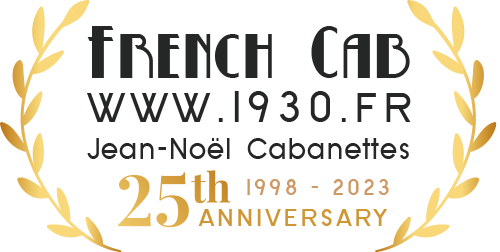Emile FLAMANT (1896-1975) Oil on canvas. "Private Concert" Henri Matisse entourage
Emile FLAMANT (1896-1975)
"Private Concert"
Oil on canvas.
Signed on back.
Excellent condition.
Dimensions : Painting 61cm 50cm
With frame : 79cm 68cm
Emile Flamant :
Born in Bohain (France) in 1896, Émile Flamant spent much of his youth in Caudry where his father managed a weaving mill.
Brilliant in his studies, Émile Flamant studied painting at the Beaux-Arts in Paris for seven years. A pupil of Jonas, he met Matisse who impressed him greatly with his revolutionary style, cutting with the tastes of the time. From then on his own painting evolves and searches for itself.
He quickly realizes that the price of Rome he is preparing does not correspond to his pictorial ideal. However, he did not give up the training he received at the Beaux-arts and, on the advice of his masters, headed for the art of fresco.
After the war of 1914-1918, a good number of churches were rebuilt, which allowed him to perfect his work as a fresco artist in religious motifs. More than thirty churches, chapels and seminaries owe its interior decoration to it. This is the case in Fresnoy-le-Grand, Becquigny and Remaucourt.
To these religious works are added profane frescoes where the author excels, let us cite the decoration of the Palais de la Bourse in Lille, the town halls of Cambrai, Bohain-en-Vermandois and Caudry.
It was in Fresnoy-le-Grand that Emile Flamant spent the end of his life and was buried. He died in 1975.
"Private Concert"
Oil on canvas.
Signed on back.
Excellent condition.
Dimensions : Painting 61cm 50cm
With frame : 79cm 68cm
Emile Flamant :
Born in Bohain (France) in 1896, Émile Flamant spent much of his youth in Caudry where his father managed a weaving mill.
Brilliant in his studies, Émile Flamant studied painting at the Beaux-Arts in Paris for seven years. A pupil of Jonas, he met Matisse who impressed him greatly with his revolutionary style, cutting with the tastes of the time. From then on his own painting evolves and searches for itself.
He quickly realizes that the price of Rome he is preparing does not correspond to his pictorial ideal. However, he did not give up the training he received at the Beaux-arts and, on the advice of his masters, headed for the art of fresco.
After the war of 1914-1918, a good number of churches were rebuilt, which allowed him to perfect his work as a fresco artist in religious motifs. More than thirty churches, chapels and seminaries owe its interior decoration to it. This is the case in Fresnoy-le-Grand, Becquigny and Remaucourt.
To these religious works are added profane frescoes where the author excels, let us cite the decoration of the Palais de la Bourse in Lille, the town halls of Cambrai, Bohain-en-Vermandois and Caudry.
It was in Fresnoy-le-Grand that Emile Flamant spent the end of his life and was buried. He died in 1975.
REFERENCE: fla0707











